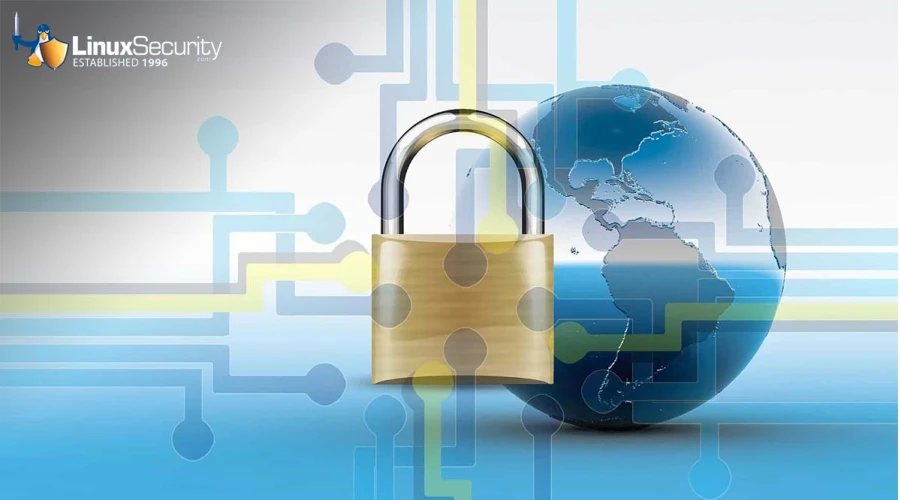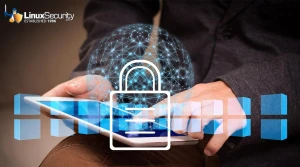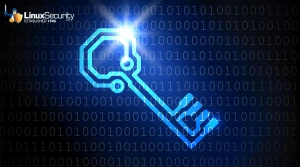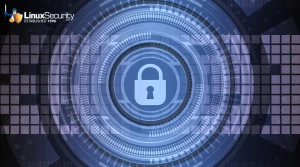SSH Under Siege: Decoding the Terrapin Attack

Researchers recently uncovered a sophisticated attack dubbed Terrapin that takes advantage of a weakness in the SSH protocol to gain access to servers. The attack targets a specific implementation issue in OpenSSH 7.2 through 8.8 that allows remote code execution. By sending carefully crafted data, attackers can overflow the stack buffer and execute commands, leading to complete server compromise.
This is especially concerning for Linux system administrators, as SSH is widely used to manage Linux servers and infrastructure remotely. The vulnerability allows attackers to bypass authentication and gain elevated privileges on the target system. While patches have been released, Terrapin serves as an urgent reminder that determined adversaries are probing for weaknesses in core internet infrastructure. Proactive vigilance and defense-in-depth strategies remain essential to secure critical systems and data.
How Does the Terrapin Attack Work?
The Terrapin attack showcases the ingenuity of threat actors and illustrates why continued vigilance is necessary even with tried and true protocols like SSH.
The malware, named Terrapin by security researchers, abuses the SSH protocol in a novel way to infect Linux systems and maintain persistence. Specifically, it modifies the SSH server daemon's host keys which are used to authenticate SSH sessions.
When an SSH client first connects to a server, the server provides its host key fingerprint. The client caches this key to validate future connections. Terrapin secretly replaces the server's legitimate host keys with ones it controls.
The next time a user logs in, their SSH client sees the fake host key and warns about a possible man-in-the-middle attack. However, many admins train themselves to accept key changes reflexively.
Terrapin relies on this conditioned response to sneak its malicious host key onto the client's system. Now any future SSH connections get silently redirected through a proxy controlled by the attackers.
This not only allows the threat actors to intercept sensitive data but also gives them remote access to pivot further into the breached network. All while avoiding detection by blending in with expected SSH communication.
The researchers note that Terrapin shows intelligence gathering and patience on the attacker's part. Instead of immediately exploiting a breach, they stealthily set the trap and then wait for the catch. This highlights the need for admins to stay alert to subtle signs of compromise even after an initial infection.
What Are the Implications for Linux Admins?
 The Terrapin attack concerns Linux admins and system administrators for several reasons. While this vulnerability affects OpenSSH, one of the most widely used tools for remote administration, the implications extend beyond just SSH.
The Terrapin attack concerns Linux admins and system administrators for several reasons. While this vulnerability affects OpenSSH, one of the most widely used tools for remote administration, the implications extend beyond just SSH.
This attack shows how a single vulnerability in a core protocol can lead to full system compromise. Once the attackers have an initial foothold from the SSH exploit, they can potentially access any other service or data on the server. Servers are often bastions of an organization's entire infrastructure, so a compromise of one server can spread network-wide.
As a privilege escalation attack, Terrapin bypasses authentication and gives the attacker immediate root access. This allows attackers to control and hide within compromised servers fully. Even with audit logging and monitoring, malicious actions are harder to detect if initiated by root.
The targeting of IoT and embedded Linux devices is also troubling. As more critical infrastructure relies on connected Linux devices, attacks against them become higher risk. Malicious control of power grids, manufacturing systems, medical devices, and more through Terrapin could lead to safety, privacy, and reliability issues.
For Linux admins, Terrapin means a renewed focus on patching, and upgrades are essential. However, it also shows the importance of reducing attack surface area through tight system hardening, network segmentation, the principle of least privilege, and other defensive best practices. Proactive logging, monitoring, and auditing are also key to help detect anomalous behaviors indicative of intrusion.
How Can I Prevent the Terrapin Attack?
The Terrapin attack targets vulnerabilities in SSH client software on Linux systems. While patches are still pending for some distros, there are several ways Linux admins can defend against this threat:
-
Upgrade SSH Client - Ensure you are running the latest SSH client version without known vulnerabilities. Fully patch or upgrade vulnerable systems.
-
Limit SSH Access - Only allow SSH connections from specific IP addresses or networks that need it. Restrict access to SSH internally when possible.
-
Disable Password Auth - Require public key authentication for SSH instead of passwords. This prevents brute force attacks.
-
Install Intrusion Detection - Monitor SSH logs closely for signs of compromise. Deploy host and network monitoring to detect brute-force attacks in real-time.
-
Segment Networks - Use internal firewall rules and VLANs to isolate critical systems. Don't allow lateral movement between subnets and environments.
-
Enforce MFA - Require multi-factor authentication for all SSH access. This will stop stolen credentials from being easily abused.
-
Raise Awareness - Educate users on social engineering and securely sharing credentials. Limit access to only those needing it.
Staying vigilant and proactively securing SSH access will make it much harder for threats like Terrapin to exploit environments. However, continued patching, upgrades, and monitoring are critical for identifying and stopping new vulnerabilities.
Monitoring for Compromise
While patching and upgrading software is critical, it's also important to monitor systems for signs of compromise. Here are some tips:
-
Review logs regularly - Look for unusual failed login attempts or activities during off hours. Unauthorized access attempts could indicate brute-force hacking attempts.
-
Inspect running processes - Use commands like
psandtopto look for unknown or suspicious processes. Attackers often try to hide malware by naming it after legitimate system processes. -
Check network connections - Tools like
netstatthis can show open ports and connections. Backdoors and malicious software often communicate over the network. -
Monitor user accounts - Look for unauthorized new users or changes to existing users like added sudo rights. Attackers try to create backdoor accounts.
-
Scan for malware - Run rootkit scanners like rkhunter and chkrootkit. They check for signs of known malware. Also, scan things like PHP files for hidden code injections.
-
Verify file integrity - Use a file integrity checker like Tripwire or AIDE to alert on unauthorized file changes. Attackers often modify system binaries or add malicious files.
-
Monitor security patches - Check that all security updates are applied promptly to ensure known vulnerabilities can't be exploited.
Staying vigilant is key. Even if patches are applied, assume systems can still be compromised. Actively hunting for the signs of intrusion is critical, especially on internet-facing systems.
Patching Vulnerabilities
Keeping SSH software up-to-date is one of the most important things Linux admins can do to prevent Terrapin and other attacks. The Terrapin attack exploits a vulnerability in OpenSSH that was patched in version 8.8 in April 2022. However, many organizations are slow to patch and upgrade services like SSH once they are running smoothly in production environments.
The tendency to continue running outdated software is understandable but very risky from a security perspective. New vulnerabilities in protocols like SSH are discovered frequently, and threat actors quickly weaponize them in attacks. Unpatched systems running old SSH versions are sitting ducks.
Upgrading to the latest OpenSSH release should be a top priority for any organization exposed to the internet and relying on SSH for remote access. Dedicate the resources to testing patches and upgrades in dev environments before promoting them to production. Establish policies and procedures to ensure SSH daemons and clients stay current going forward.
The effort required for ongoing patching and upgrades is far less than that needed to detect, contain, and recover from a breach. Take software updates and patches seriously, especially for security-critical network services like SSH.
Multi-Factor Authentication
Multi-factor authentication (MFA) is an important security control to implement for SSH access. Instead of relying solely on a username and password for authentication, MFA requires users to provide an additional factor, such as a one-time code sent to their mobile device.
Enabling MFA provides significant security benefits for SSH:
- Provides an additional layer of protection beyond just a password. If credentials are compromised in a breach, an attacker still cannot access SSH without the additional factor.
- Defends against brute force attacks. Even if an attacker determines a user's password through guessing, MFA will block access without the secondary authentication factor.
- Protects against password reuse risks. An exposed password on one system does not enable access to SSH if MFA is required.
- Adds user-friendly options like push notifications and biometrics for the second factor.
- Can detect suspicious login attempts and block illegitimate access.
For Linux administrators already using SSH keys for authentication, MFA further strengthens security. Overall, implementing MFA is one of the most meaningful controls an organization can adopt to secure SSH access and defend against advanced attacks like Terrapin. The minimal extra effort for users to authenticate with a second factor provides major security dividends and peace of mind.
Network Segmentation
Minimizing lateral movement is critical for mitigating attacks like Terrapin. Segmenting networks into zones using firewalls, VLANs, and access controls can limit the blast radius if an attacker breaches part of the infrastructure.
Admins should segment based on trust levels, using strict rules to filter traffic between zones. Critical servers like domain controllers should be isolated from general-purpose systems. Test/dev environments should also be segregated from production to prevent test instances from being used to pivot into production systems.
Zero-trust network architectures take segmentation further by denying traffic by default and restricting communication to only what is explicitly allowed on a policy basis. While complex to implement correctly, zero trust significantly raises the bar for attackers attempting lateral movement.
With the highly connected nature of modern networks, no segmentation is foolproof. But intelligent network segregation remains an important defense-in-depth measure against attacks like Terrapin that rely on pivoting through systems after gaining an initial foothold.
Insider Threats
 The Terrapin attack highlights the risks that come from malicious insiders who have privileged access to systems. Even with strong perimeter defenses, a rogue admin on the inside can carry out damaging attacks.
The Terrapin attack highlights the risks that come from malicious insiders who have privileged access to systems. Even with strong perimeter defenses, a rogue admin on the inside can carry out damaging attacks.
Some ways to mitigate insider threats:
-
Implement separation of duties and least privilege access. Don't give any single person too much power.
-
Use monitoring and auditing to detect anomalous behavior from privileged accounts. Look for unusual login times, commands run, and files accessed.
-
Enforce multi-factor authentication for admin logins. This raises the bar for stealing credentials.
-
Log and alert on suspicious admin activities like disabling security tools, excessive data exfiltration, or tampering with logs.
-
Conduct background checks during the hiring process for sensitive roles. Screen for potential red flags.
-
Implement behavioral analytics to spot risky user behavior patterns. Model normal vs abnormal activities.
-
Provide anonymous reporting channels for employees to flag concerning insider actions.
-
Foster an ethical workplace culture with clear policies, expectations, and accountability.
Insider threats are hard to eliminate entirely, but taking proactive steps can help reduce the risk and damage they can inflict. Ongoing vigilance is required, along with being alert to warning signs.
The Importance of Ongoing Cyber Vigilance
The Terrapin attack demonstrates the ever-evolving nature of cyber threats and the need for continuous security monitoring and vigilance. Even if all known vulnerabilities are patched, new attack methods can emerge anytime. Organizations should have robust security awareness training to alert employees to potential risks. Monitoring systems and access logs can help detect anomalies that may indicate compromise. But technology alone is not enough. A vigilant security culture requires engagement from every employee, not just IT staff. With distributed workforces connecting remotely, risks multiply. Everyone has a role to play in spotting and reporting possible intrusions. Cyber hygiene, like strong, unique passwords and multi-factor authentication, is a daily habit. As defenders, we must be proactive, not reactive. The threats won't wait for us to catch up. Only persistent preparation and vigilance give us a fighting chance against sophisticated adversaries. Complacency is the enemy. We must continually adapt and improve defenses in anticipation of what comes next.
Be sure to subscribe to our weekly newsletters to stay up-to-date on the latest advisories, information, and insights impacting the security of your Linux systems.
Stay safe out there!























